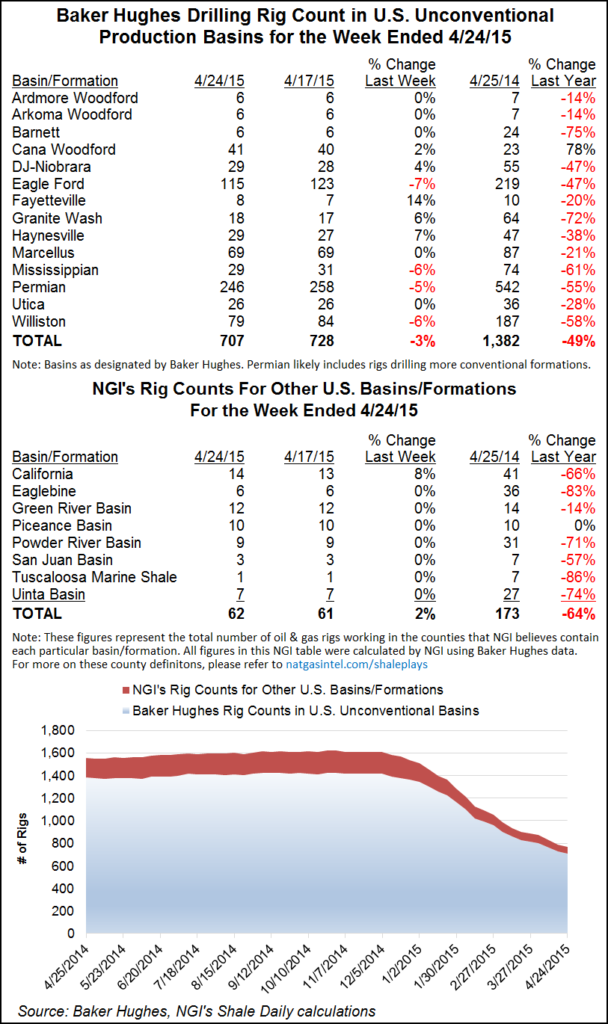E&P | NGI All News Access | Permian Basin
So Long, Rigs; Don’t Hurry Back
These days, no one could accuse U.S. land drilling rigs of sticking around where they’re not wanted. Rigs keep departing, and analysts say more need to go. Only some of them will return — and not for a while, they say.

The U.S. land rig count fell by 16 units in the latest Baker Hughes Inc. count, released Friday, Oct. 9. Two rigs went back to the offshore, so the net U.S. decline was 14 rigs to 795 running — but a shadow of the year-ago tally of 1,930.
“Lower commodity prices and continued efficiency gains likely [will] push the rig count lower in coming quarters, perhaps by an additional 40-60 rigs, resulting in an [approximate] 750 rig bottom,” Cowen and Company analysts said in a note Wednesday.
Domestic production declines will likely gather pace during the first quarter, but if/when rigs come back, the supply-demand balance will be upset again, Cowen analysts Marc Bianchi and Jonathan Hunter said. They wrote that fewer than 1,000 rigs should be enough to satisfy crude demand for the next 12-18 months, “…and perhaps no more than 1,200 will be needed after that.”
Analysts at Raymond James & Associates Inc. cut their natural gas price outlook and their rig count expectations last Monday (see Daily GPI,Oct. 5). For next year, Marshall Adkins and company are expecting the U.S. count to average 700 units, down from 900 in the previous estimate. “…[T]hat means the U.S. rig count will likely fall another 28% (or about 265 rigs) from an anticipated 966 average U.S. rigs in 2015,” the analysts said.
“…[W]e are now looking for the U.S. rig count to exit 2015 at about 650 rigs and bottom in the second quarter of 2016 at just under 600 rigs.” Firmer crude prices during the second half of 2016 will stimulate activity for a 2016 exit of about 930 rigs, they said.
Turning to the current Baker tally, the United States saw nine oil-directed rigs depart and six gas rigs leave the game. Most (11) were horizontal units, while three verticals departed, too.
Among states, Oklahoma was the biggest loser, giving up six rigs to end at 91 units running. The Permian Basin saw the departure of 10 rigs to end at 235, the largest decline by far of all the plays.
In Canada, four oil-directed rigs were added, but three gas-directed rigs quit.
© 2024 Natural Gas Intelligence. All rights reserved.
ISSN © 2577-9877 | ISSN © 2158-8023 |
